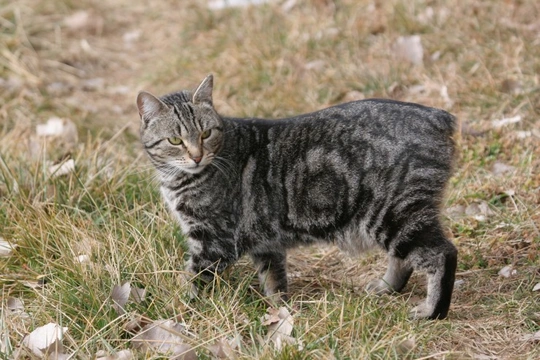
American Bobtail or Manx Cat, which is best for you?
Cats bring so much pleasure into the home. They are always up to something when they are not snoozing because all cats like to take a nap or two throughout the day especially in warm, tucked away and cosy favourite places around the home. If you are thinking about getting a cat and would like one that's a bit different than the rest, you would not go far wrong in choosing either an American Bobtail or Manx Cat, both of which don't have tails.
American Bobtail country of origin
The American Bobtail was first developed in the United States in the sixties so the breed is a relative newcomer to the world of cats. To date the breed is not recognised by the GCCF. They have fast become popular family pets and companions not only in the States, but elsewhere in the world too.
Manx Cat country of origin
The Manx Cat is native to the UK having first been bred on the Isle of Man. Sadly, their numbers have declined over recent times with very few kittens being registered with GCCF every year. As such, anyone wanting to share their homes with one of these charming cats would need to register their interest with breeders and go on a waiting list for the pleasure of doing so.
American Bobtail personality
American Bobtails make for wonderful family pets and companions being particularly tolerant of children and other pets they grow up with. Affectionate, fun-loving and intelligent, sharing a home with an American Bobtail is always a lovely experience.
Manx Cat personality
Gregarious, affectionate and a real character, the Manx loves people although they can be wary of people they don’t know. They are also known to be highly intelligent and love playing interactive games much like dogs do. Manx cats like being around other cats, unlike many other breeds and are not as territorial either thanks to their laid back, outgoing natures. They make wonderful family pets and companions enjoying nothing more than being in a loving home environment.
Care and maintenance
American Bobtails can either have short, close lying coats with dense undercoats or they can have longer, shaggier coats which makes them higher maintenance on the grooming front.
The Manx has a longer topcoat with a very dense and short undercoat, but they are slightly lower maintenance when it comes to grooming.
Both breeds shed steadily throughout the year, only more so in the spring and autumn when they tend to leave more hair lying around.
American Bobtail life expectancy
The average life span of an American Bobtail is between 13 and 15 years when correctly cared for and fed an appropriate diet throughout their lives.
Manx Cat life expectancy
The average life expectancy of a Manx is between 8 and 14 years and they can live even longer if they are well cared for.
American Bobtail health
The American Bobtail is known to be a healthy and robust cat although there is one issue that appears to affect the breed the most which affects their spines often resulting in cats not being able to control their bowels.
Manx Cat health
Manx cats are known to suffer from hereditary health issues, more so than the American Bobtail. The health concerns that appear to affect them the most are as follows:
- Manx Syndrome
- Sacrococcygeal Dysgenesis
- Megacolon
- Rump fold intertrigo
- Corneal dystrophy
- Arthritis
- Kinked short tails - a rare condition that occurs when their tails don't develop fully
The Importance of Responsible Breeding
It's essential to contact responsible breeders when deciding to share a home with either an American Bobtail or a Manx Cat. The reason being that two tailless cats should never be bred together which could result in further health concerns for offspring. Where the Manx Cat is concerned, breeding from two tailless cats often results in litters being miscarried by their mothers.
Lastly
If you decide to share your home with a Manx or an American Bobtail, you may need to register your interest with breeders first and agree to go on a waiting list. It’s also important to contact well established, responsible breeders who take great care when it comes to screening their stud cats as this is the only way of reducing the risks of American Bobtail and Manx kittens not inheriting any health issues that are known to affect the breeds.
If you are looking for one of these two cat breeds, you can visit ourAmerican Bobtails for SaleandManx Cats for Salepages.



